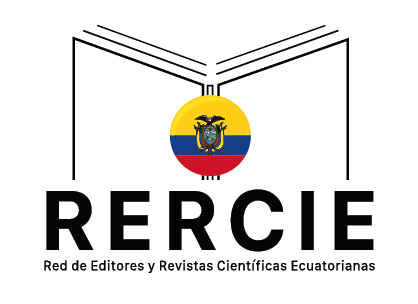La brecha generacional y su impacto en la conducta de estudiantes en educación
DOI:
https://doi.org/10.36097/rsan.v1i59.3212Palabras clave:
Actitud, conocimientos, edad, habilidad, valoresResumen
Actualmente en el entorno académico se encuentran interactuando generaciones diferentes: generación X, milenials (generación Y) y centenials (generación Z), surgiendo la incógnita sobre si existe una percepción diferente sobre la importancia de los conocimientos, las habilidades, la actitud y los valores, entre alumnos de diferentes generaciones. Para dar respuesta a esta incógnita se realizó la presente investigación con el objetivo de probar si el nivel de importancia respecto a los conocimientos, las habilidades, la actitud y los valores era distinto según la edad del estudiante de educación de la Universidad Autónoma del Noreste (UANE) campus Monclova, México. Se aplicaron en el campus universitario entrevistas individuales a una muestra de 158 alumnos que cursaban carreras relacionadas a la educación (licenciatura y posgrado) de la Universidad Autónoma del Noreste campus Monclova, México. El análisis de los datos obtenidos se realizó mediante la prueba estadística de H de Kruskal-Wallis para comprobar la hipótesis. Los resultados mostraron que el nivel de importancia que cada alumno percibe respecto a los conocimientos, las habilidades, la actitud y los valores no es distinto según su rango de edad.
Descargas
Referencias
Alegría, F. (2020). Brecha Generacional del Aprendizaje. Journal of the European Institut for Multidisciplinary Studies on Human Rights & Science, 2(1), 2-19. https://knowmadinstitut.org/wp-content/uploads/2020/09/ES-Brecha-Generacional-del-Aprendizaje-_-Knowmad-Institut.pdf
Castañeda, B. X. Y., Fuentes, H. C., Pérez, M. R., & Inguanzo, A. B. L. (2021). Brecha generacional y condiciones de los académicos para la producción de conocimiento en México. Revista del IICE, (50), 55-74. https://doi.org/10.34096/iice.n50.11266
Castillejos López, B. (2019). El autoconcepto de los millennial´ s como aprendices y la autorregulación y motivación por el aprendizaje permanente: un estudio con estudiantes universitarios en México. Revista iberoamericana de educación, 79(2), 81-98. https://redined.educacion.gob.es/xmlui/bitstream/handle/11162/185609/v.79%20n.2%20p%2081-98.pdf?sequence=1
Dávila Morán, R. C., Agüero Corzo, E. C., Castro Llaja, L., & Vargas Murillo, A. R. (2022). Productividad laboral y el teletrabajo en el sector público durante el período de emergencia nacional. Revista Universidad y Sociedad, 14(2), 402-409. http://scielo.sld.cu/pdf/rus/v14n2/2218-3620-rus-14-02-402.pdf
Eiguren, M. A., Berastegi, S. N., y Correa, G. J.M. (2022). Combatiendo la brecha generacional: revisión sistemática de las experiencias intergeneracionales llevadas a cabo en el entorno escolar. Revista de Investigación Educativa, 40(2), 341-363. http://dx.doi.org/10.6018/rie.436791
Farías Montemayor, O. M. (2023). Comparación entre conocimientos teóricos y prácticos del personal sindicalizado y no sindicalizado en siderúrgica coahuilense. Revista San Gregorio, 1(56), 14-32. https://doi.org/10.36097/rsan.v1i56.2400
Farías-Montemayor, O. M. (2018). Construcción del instrumento de medición “percepción de elementos que conforman las competencias”. Vinculatégica EFAN, 3(3), 1-9. https://doi.org/10.29105/vtga3.3-929
Flores Tapia, C. E., & Flores Cevallos, K. L. (2023). Pruebas de bondad de ajuste Kolmogórov-Smirnov y Ji-cuadrada aplicadas a la toma de decisiones empresariales. Yachana Revista Científica, 12(2), 113–127. https://doi.org/10.62325/10.62325/yachana.v12.n2.2023.844
Flores, J., & Flores, R. (2018). La enseñanza del diagrama de caja y bigotes para mejorar su interpretación. Revista Bases de la Ciencia. e-ISSN 2588-0764, 3(1), 69-75. https://doi.org/10.33936/rev_bas_de_la_ciencia.v3i1.1107
Fuentes, M., & Yohannessen, K. (2019). Cómo leer y generar publicaciones científicas: exploración gráfica de datos cuantitativos: la importancia de mirar la información. Neumol. pediátr. (En línea), 194-199. https://n9.cl/e58sf
García, G. J. G., & Maroto, M. F. (2018). Interpretación de resultados estadísticos. Medicina Intensiva, 42(6), 370-379. https://doi.org/10.1016/j.medin.2017.12.013
García, H. A., Gutiérrez, A. M. F., Pérez, F. K. T., Zavala, M. F. N., Curiel, P. C. A., & Granados, M. M. E. (2021). La brecha generacional entre docentes y estudiantes del NMS de la UG. Jóvenes en la Ciencia, 10. https://www.jovenesenlaciencia.ugto.mx/index.php/jovenesenlaciencia/article/view/3386
Gea Serrano, M. M., Arteaga Cezón, P., & Cañadas de la Fuente, G. R. (2017). Interpretación de gráficos estadísticos por futuros profesores de Educación Secundaria. Avances De Investigación En Educación Matemática, (12), 19–37. https://doi.org/10.35763/aiem.v1i12.189
Goss-Sampson, M. A., & Meneses, J. (2019). Análisis estadístico con JASP: Una guía para estudiantes.
Ladrón de Guevara, C. R., Gómez, M. A., Peña, V. V., & Madrid, P. R. (2020). Influencia del nivel de avance educativo y el género en la toma de decisiones financieras: una aproximación desde la Prospect Theory. Revista Finanzas y Política Económica, 12(1), 19-54. https://doi.org/10.14718/revfinanzpolitecon.v12.n1.2020.3092
Madrid, A. E., Valenzuela-Ruiz, S. M., Batanero, C., & Garzón-Guerrero, J. A. (2022). Interpretación del diagrama de caja por estudiantes universitarios de ciencias de la actividad física y deporte. Educación matemática, 34(3), 275-300. https://doi.org/10.24844/em3403.10
Marinas, L. (2019). Instagram: Donde Millennials, Generación Z, Mcluhan y Bolter se cruzan. CIC. Cuadernos de Información y Comunicación, 24, 187-201. https://doi.org/10.5209/ciyc.64641
Montano Pérez, B. E., Luévanos Rojas, A., Salas Torres, L. H., & Martel Carranza, C. P. (2024). Grupos Generacionales que Integran el Capital Humano y su Proyección en la Empresa. InnOvaciOnes De NegOciOs, 21(41), 20–37. https://doi.org/10.29105/revin21.41-433
Pachucho-Hernández, P., Cueva-Estrada, J., Sumba-Nacipucha, N., & Delgado-Figueroa, S. (2021). Marketing de contenidos y la decisión de compra del consumidor de la generación Y. IPSA Scientia, revista científica multidisciplinaria, 6(3), 44-59. DOI: https://doi.org/10.25214/27114406.1123
Pelea, P. L. (2019). Valores atípicos en los datos, ¿cómo identificarlos y manejarlos? Revista Del Jardín Botánico Nacional, 40, 99-107. https://www.jstor.org/stable/26937051
Piscitelli, A. (2006). Nativos e inmigrantes digitales. ¿Brecha generacional, brecha cognitiva, o las dos juntas y más aún?. Revista mexicana de investigación educativa, 11(28), 179-185.
Ramírez González, K. (2023). Brecha generacional de docentes y estudiantes en la formación de profesionales de medicina y cirugía. Reencuentro. Análisis De Problemas Universitarios, 35(86), 185-208. https://reencuentro.xoc.uam.mx/index.php/reencuentro/article/view/1234
Tárraga, L. P. J., Panisello, R. J. M., Carbayo, H. J. A., Carro, A., Rosich, N., Panisello, M., Allins P. J. & Solera A. J. (2021). Cambios observados en la adherencia a la dieta mediterránea en una población española durante el confinamiento debido a la pandemia ocasionada por el SARS-CoV-2. Nutrición Hospitalaria, 38(1), 109-120. https://dx.doi.org/10.20960/nh.03275
Terán-Cázares, M. M., Rodríguez-Garza, B. N., & De la Peña, M. E. G. (2019). Análisis de la brecha generacional en las tendencias de capacitación docente digital universitaria, afrontando la realidad Centennial. Vinculatégica EFAN, 5(1), 349-361. https://doi.org/10.29105/vtga5.1-902
Descargas
Publicado
Número
Sección
Licencia
Derechos de autor 2024 Anahí Virginia Pizarro Vásquez, Oscar Mario Farias Montemayor, Sergio Raymundo Romero Montemayor, Esmeralda Lucero Costilla Liñán

Esta obra está bajo una licencia internacional Creative Commons Atribución-NoComercial-SinDerivadas 4.0.















